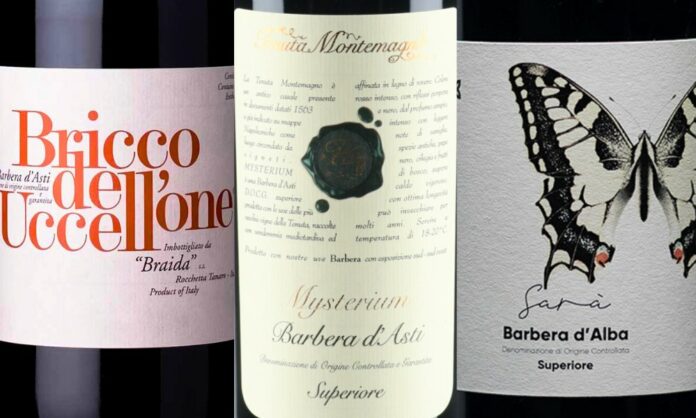
What are the best Barberas? A list with photos, descriptions, and tasting notes of the best Barberas in terms of quality-price ratio.
You might also be interested in articles dedicated to the best Barolos and best Barbarescos.
Would you like to suggest a wine or a winery? Write to us
INDEX
BEST BARBERA WINES – recommended by Jean Marco Palmieri

What are the best Barberas? Barbera in Italy has also brought to light other wines of the highest quality.
Let’s therefore see a list of the best Barbera producers and discover together their characteristics through our tasting, so that everyone can find the best Barbera suited to their tastes.
Mysterium 2018 – Tenuta Montemagno

To the nose, it presents itself with a pleasant aromatic intensity, where notes of blood orange blend with hints of tobacco and sweet spices.
On the palate, the sip is round and enveloping, with a well-structured tannic texture and a balanced alcoholic component.
The finish is of good length, with emerging lightly integrated woody notes.
A wine of great length and taste-olfactory complexity. Deservedly among the best Barberas for elegance and balance.
Barbera d’Alba Superiore 2020 – Camparo

Description:
A very broad, refined, and complex wine, it opens up with notes of wild strawberries and raspberries, cocoa powder, licorice, and potpourri of dehydrated violets. Full-bodied on the palate with tannins of great finesse. Excellent persistence and elegance with echoes of spicy fruity notes.
An extraordinarily eloquent taste-olfactory wine: intense and penetrating. Impeccable interpretation, among the best Barberas in Italy for their artisanal and sincere character.
Type of Barbera: Barbera d’Alba
Bosco Donne 2022 – Gianni Doglia

Blackcurrant, blackberry, and wild berry notes extend towards a more evolved finish of jam, spicy hints, and chalky undertones. Tasting reveals a harmonious and satisfying experience, with a distinct tannic structure supported by a great acidity. The finish is lengthy and precise with returns to the fruit and spices.
An engaging label with great recognizability. Gianni Doglia’s Bosco Donne is among the best Barberas for its broad and delicate aromas, soft and enveloping palate, and a finish of rare craftsmanship.
Type of Barbera: Barbera d’Asti
Barbera d’Asti ‘Bricco dell’Uccellone’ 2020 – Braida

Description:
It casts captivating notes of jammy forest fruits, followed by a more austere character of tar, tobacco, and toasted notes. It stimulates the palate with silky tannins and good acidity that enhances drinkability. Great savoriness and excellent persistence.
One of the best Barberas: opulent, savory, and compelling. The Bricco dell’Uccellone is certainly an iconic wine that has left its mark in history among virtuous interpretations of the Barbera grape.
Type of Barbera: Barbera d’Asti
Passum 2019 – Cascina

Characteristics: Penetrating aromas of blueberries and blackberries in jam stand out on the nose, followed by hints of autumnal forest, cinnamon, tar, and dark cocoa powder.
On the palate, it is savory with a nervy tannic structure that creates an interesting interplay with the savory fruity components. Long, harmonious finish, with echoes of fruit and sweet spices.
Fully deserving of its place among the best Barberas for its artisanal character: Sensational persistence, cleanliness, integrity of fruit, and great finesse on the palate.
Type of Barbera: Barbera d’Asti
Barbera d’Asti 2022 – Pianbello
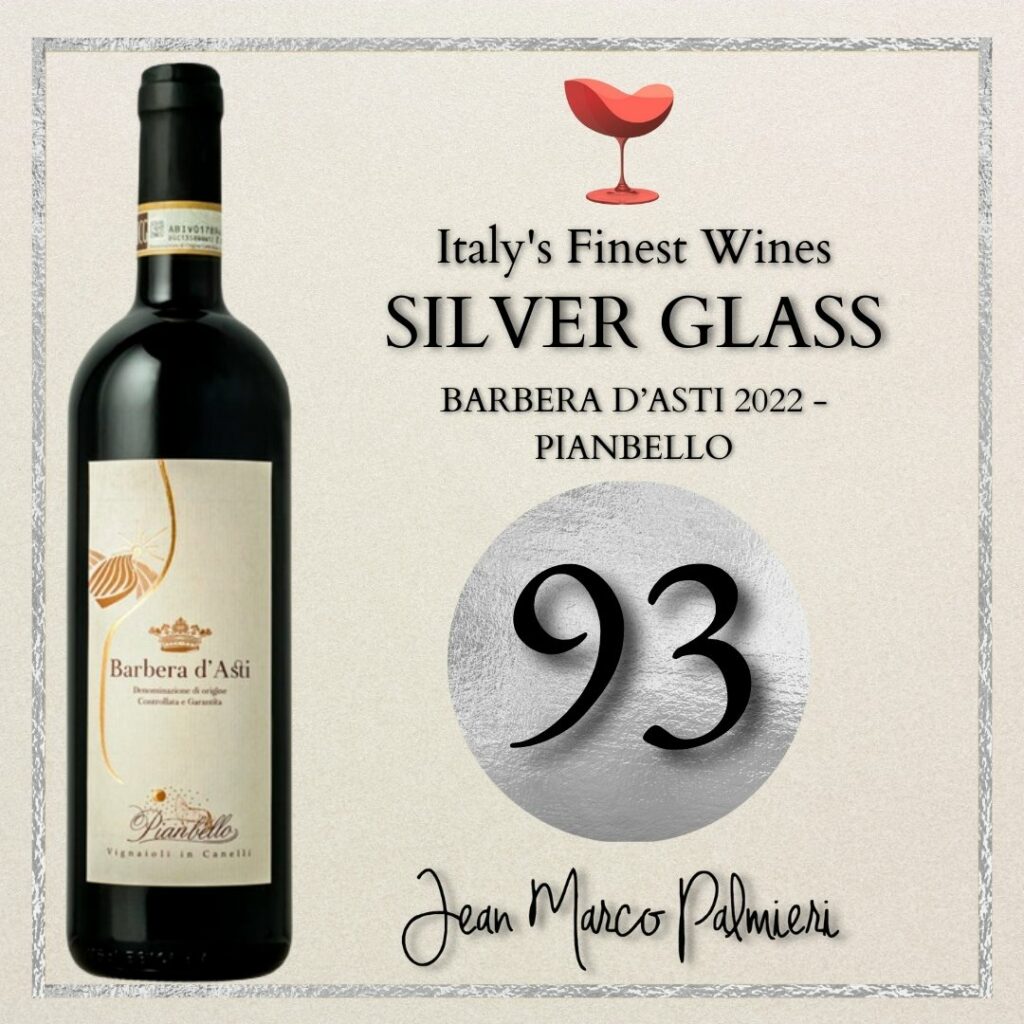
Characteristics:
Sharp notes of wild strawberries, raspberry, and delicate hints of blood and leather.
On the palate, it’s broad and intense, with a thick yet smoothly integrated tannin harmoniously linked to a nerve-like acidity that enhances drinkability. The finish offers delicate references to fruit and spicy hints.
One of the best Barberas to choose for its ability to balance finesse and olfactory creativity, sensational persistence, and palate engagement.
Type of Barbera: Barbera d’Asti
Frem 2021 – Scagliola
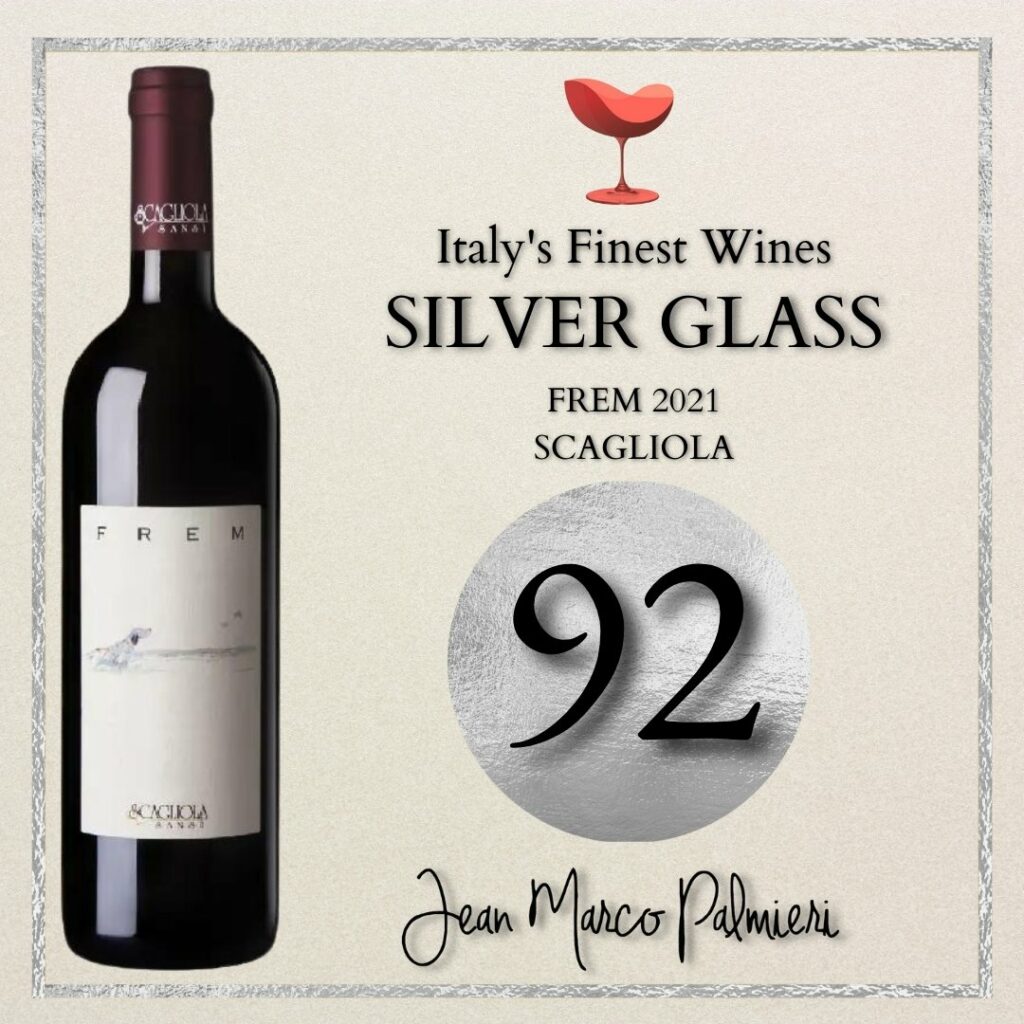
On the nose, it opens up broadly, ranging from pleasant notes of cherry, blackcurrant, and wild strawberries adorned with mineral suggestions and nuances of black pepper and cloves. It reveals itself on the palate with a velvety and enveloping medium-bodied tannic texture, with a nervy acidic backbone that provides freshness and dynamism.
A Barbera of great character with a powerful palate that does not forgo the typical varietal liveliness. Among the best Barberas for its seductive and authentic palate and a harmonious, balsamic finish of great persistence and intensity.
Type of Barbera: Barbera d’Asti
Epico 2019 – Pico Maccario
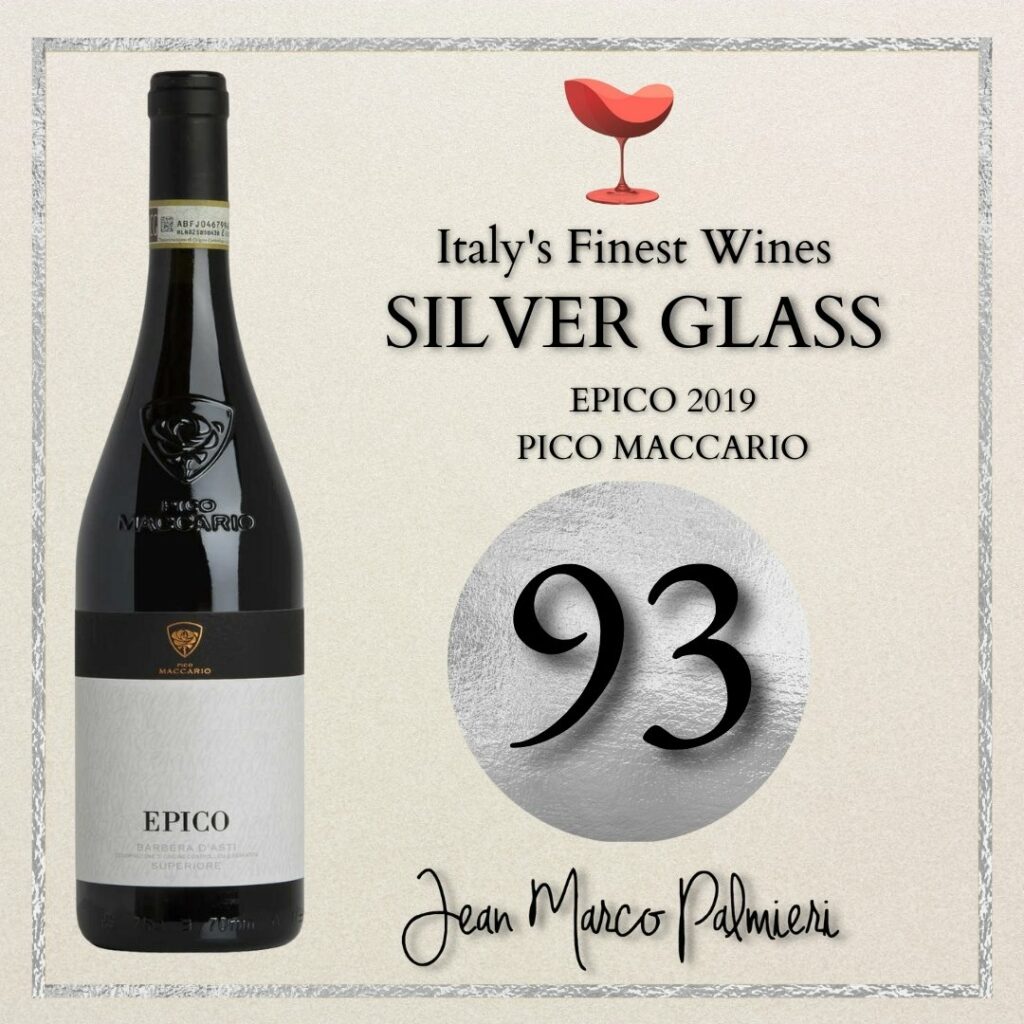
Typical varietal fruity aromas of ripe cherry and red berries, enhanced by floral hints, spices, and light woody nuances.
The palate advances with a lively and silky tannic structure, softened by a Barbera’s typical acidity that provides freshness and drinkability.
It finishes with an incredibly persistent fruity finish.
A Barbera of great finesse, with an eloquent bouquet and pronounced freshness that gives it excellent drinkability and balance: among the best Barberas.
La Luna e i Falò 2020 – Vite Colte
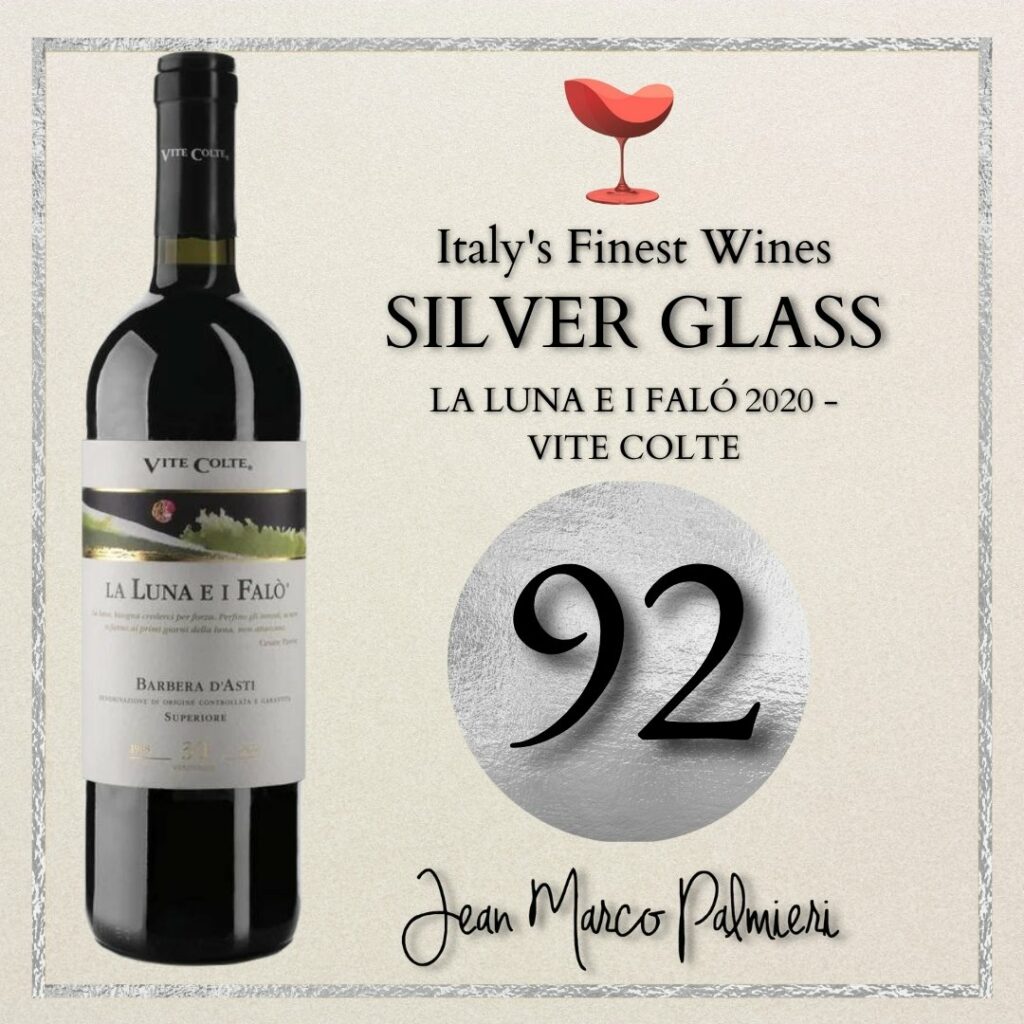
On the nose, it emanates intense tones of wild berries, raspberries, enriched by earthy and floral echoes.
On the palate, it’s substantial and compact, with a lively acidity that brings harmony and cleanliness to the sip.
A finish of great persistence with delicate returns to the fruit.
An eloquent and imaginative wine but with great coherence with the territory. Excellent value for money.
Type of Barbera: Barbera d’Asti
5 Vignés 2019 – La Morandina
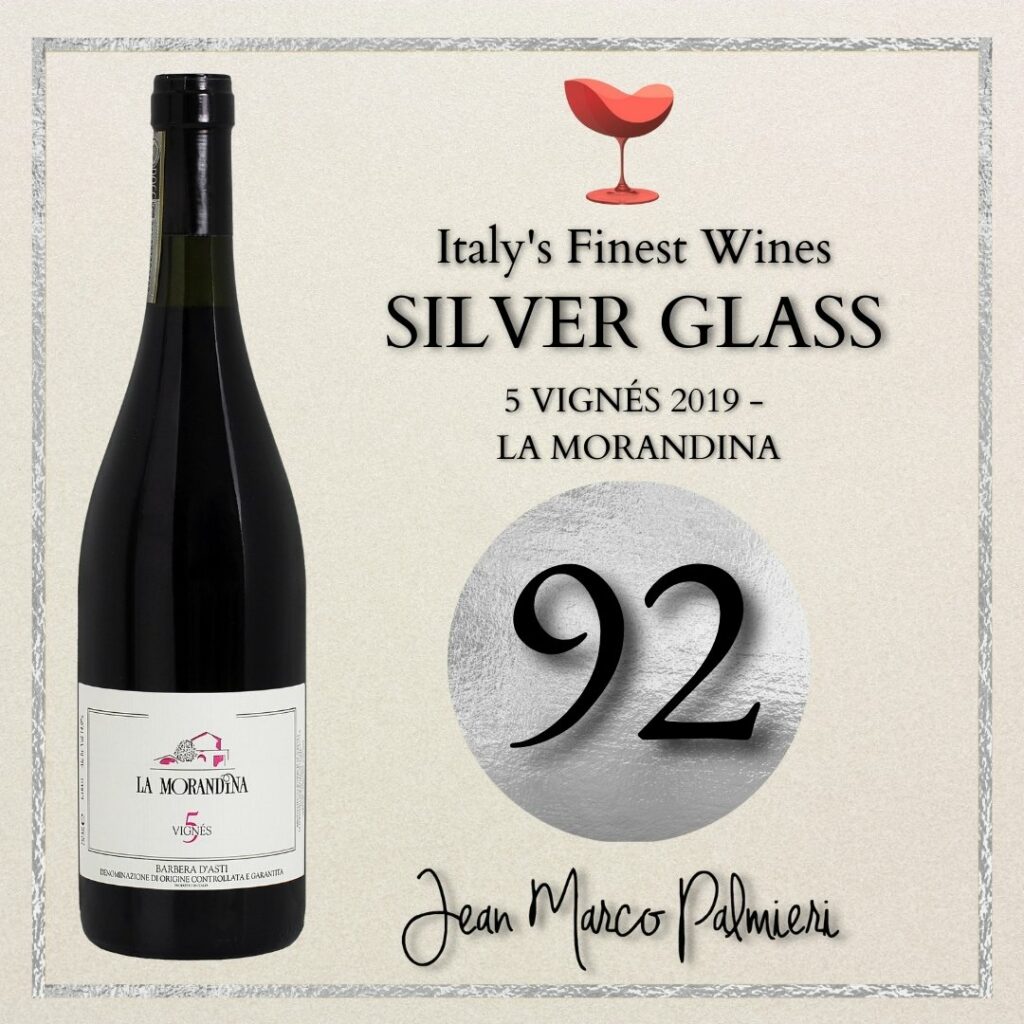
Engaging aromatic profile, evolving between blackberries, blackcurrants, with subtle floral and spicy notes, cocoa powder, and smoky nuances.
On the palate, it’s harmonious and balanced with powerful tannins expertly softened by acidity, with a persistent and penetrating finish.
Morandina once again proves to be synonymous with quality and elegance, with a wine that stands out for its balanced essence and great character.
Type of Barbera: Barbera d’Asti
Tipologia di Barbera: Nizza
BARBERA: WINE AND GRAPE
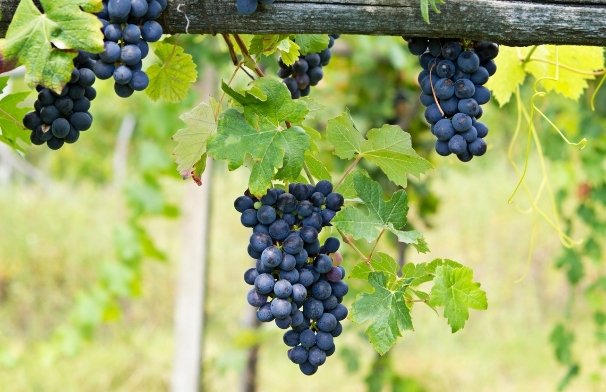
Main Wines produced with Barbera: Barbera d’Asti DOCG – Barbera del Monferrato Superiore DOCG – Nizza DOCG – Barbera d’Alba DOC – Barbera del Monferrato DOC – Pinerolese Barbera DOC – Canavese Barbera DOC – Colli Tortonesi Barbera DOC – Colline Saluzzesi DOC
“Generous Barbera.
Drinking it, we feel
like being alone at sea
challenging a storm.”
Giosuè Carducci
Barbera is the most widespread variety among Piedmontese wines and accounts for about 30% of total production. It is a medium-late variety that adapts very well to the pedoclimatic environment: it is worth noting that Barbera is also widely grown in California, South America, and other wine regions of the world. It is distinguished by the intense blue color of the berry, endowed with great acidity.
Furthermore, it is a particularly versatile variety that can be appreciated with young sparkling and drinkable wines or in more structured versions aged in barriques.
Wines made from Barbera are of an intense ruby red color, with bold aromas of red fruits and undergrowth, hints of rose and spices, elegant and structured, with pronounced acidity in youth that tends to soften with aging.
It is mainly grown in the areas of Alba (where it gives rise to Barbera d’Alba DOC), in the area of Alessandria, in the Colli Tortonesi, and especially in the Monferrato Astigiano, where famous interpretations of Barbera are born such as the recent denomination Nizza DOCG, or Barbera del Monferrato Superiore DOCG and Barbera d’Asti DOCG.
TYPES OF BARBERA
Barbera d’Asti DOCG
Red wine from Piedmont produced in the “base” and “Superiore” types in a production area between the provinces of Asti and Alessandria. Here, Barbera is typically cultivated using the Guyot pruning system, which allows for reaching high-quality levels.
Barbera del Monferrato Superiore DOCG
Piedmontese wine produced from the homonymous Barbera grape variety in the provinces of Asti and Alessandria, in a vast production area that overlaps with that of Barbera d’Asti DOCG.
Barbera, always grown with Guyot, forms the basis of Barbera del Monferrato Superiore (min. 85%) and is blended with traditional black grape varieties such as Grignolino, Freisa, and Dolcetto together or alone for a maximum of 15%.
Nizza DOCG
Red wine from Piedmont produced from the best Barbera grapes, grown in 18 neighboring municipalities to Nizza Monferrato, in the province of Asti. Previously a subzone of Barbera d’Asti, Nizza DOCG became independent in 2015. Despite its recent status, Nizza DOCG represents the top-tier cru for Barbera and is the flagship of Monferrato Astigiano.
Nizza DOCG wines are made from 100% Barbera grapes and require a minimum aging of 18 months, which becomes 30 months for the “Riserva” type.
Barbera d’Alba DOCG
Barbera d’Alba is a DOC wine produced in the province of Cuneo from Barbera grapes (minimum 85%). According to regulations, Barbera d’Alba can acquire the “Superiore” designation if it undergoes a minimum aging period of 12 months and the wine has an alcohol content of not less than 12% vol.
Which is the best Barbera?
What is the best Barbera? Choosing is a challenging task, which inevitably falls prey to the limits of subjective opinion, which as such, by definition, is deficient and arbitrary.
We have compiled our list of virtuous interpretations of Barbera from the best wineries and producers of Barbera according to our evaluations. However, it remains essential to emphasize that the best Barberas are those capable of moving us, even by tying themselves to contingent situations and unrepeatable and intimate moments of our lives.
Therefore, we invite you to discover all the wineries that produce Barbera in their uniqueness, so that you can find and choose autonomously the wine that can be counted among your best Barberas.
BARBERA FOOD PAIRINGS
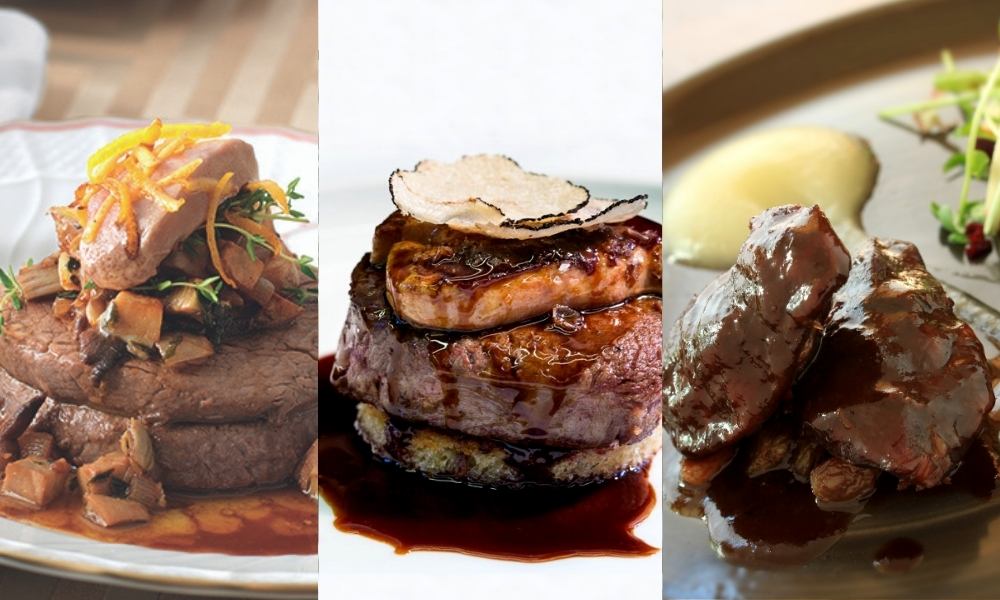
Now that we’ve seen what the best Barbera wines and producers are, the question naturally arises: what are the best food pairings for Barbera?
Barbera is a truly versatile variety, which can be enjoyed in its younger, more drinkable versions even as an aperitif with semi-aged cheeses and local cold cuts or with typical Piedmontese appetizers such as composta (or Piedmontese giardiniera).
In its more aged versions, the typical vibrant acidity of Barbera is softened with aging, providing more structured and complex versions: excellent paired with truffles and important first courses, roast red meats, and vitel tonnè.
Furthermore, it is often used in cooking, giving rise to fantastic traditional dishes such as risotto cooked with Barbera, braised beef in Barbera, and sweet wine donuts: a multifaceted variety impossible not to appreciate.





